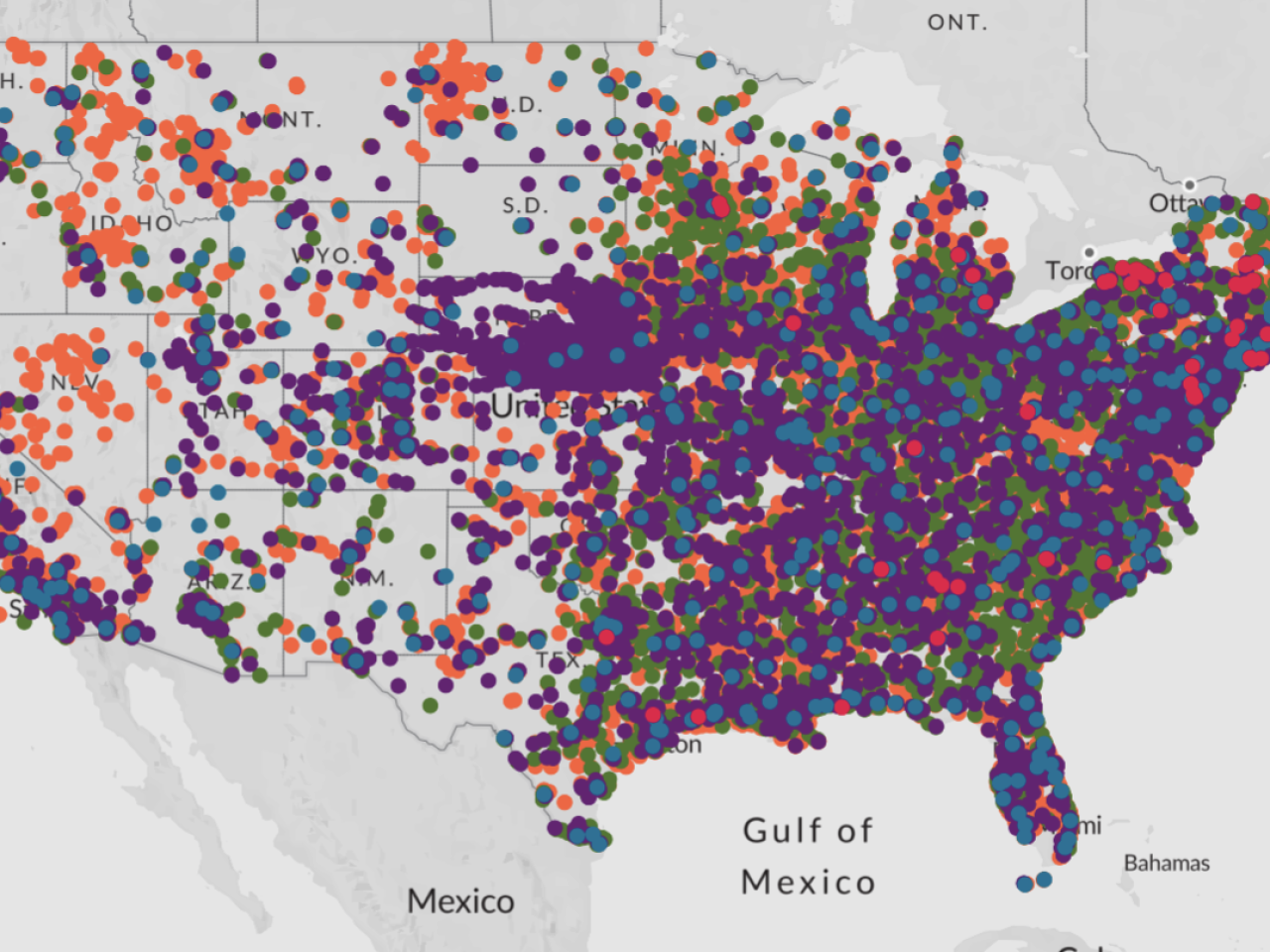
Many of the 11,000-plus active and closed landfills in the U.S. could be contaminated with the “forever chemicals” known as PFAS, creating increased health risks for the low-income communities and communities of color that are often located close to these sites.
Experts estimate that every year 16,500 pounds of PFAS end up in landfills from discarded household goods, industrial waste and more. About 1,100 pounds of these chemicals get released, creating air pollution problems for people living nearby.
And 1,760 pounds of PFAS escape through liquid waste called landfill leachate, contaminating groundwater and drinking water. At some landfills, PFAS are detected at levels in the tens of thousands of parts per trillion, or ppt. That’s dramatically higher than the 4 ppt drinking water limit the Environmental Protection Agency has proposed for six PFAS.
PFAS pollution is a problem at landfills throughout the U.S.:
- Minnesota officials found PFAS in 100 closed landfills, including 16 sites where PFAS detections were 10 times above state drinking water standards for the chemicals.
- New Hampshire officials found that 135 out of 174, or 77.5 percent, sampled landfills had PFAS in groundwater above state standards.
- Vermont officials found elevated levels of several different PFAS in the leachate of all landfills tested.
- California officials found the leachate at 84 sampled landfills contained PFAS. At some sites individual PFAS were found at tens of thousands ppt.
- Michigan officials have identified 93 landfills where PFAS have been detected.
- Researchers in Washington state found elevated levels of PFAS in 17 sampled landfills.
- New York officials found PFAS in the groundwater above state standards at 70 percent of inactive landfills surveyed.
A 2020 study of 200 landfills found PFAS present in 95 percent of landfill leachate tested, with 63 different PFAS detected across the sites.
Disproportionate risks
Many communities made up primarily of people of color or people living on a low income are located near landfills. They are disproportionately exposed to many toxic contaminants, even without factoring in PFAS exposure.
About 13 million people live within one mile of a landfill. Cancer is more prevalent among communities living near landfills.
Landfill owners and operators have long knowingly accepted sludge and industrial waste contaminated with PFAS, including waste from industrial facilities that produce or use PFAS. While consumer products containing PFAS also get discarded in municipal landfills, experts say PFAS levels could be higher at those that accept sludge and industrial waste. PFAS are used at higher concentrations in industrial settings and they are also known to be concentrated in sludge.
Landfill owners and operators have long understood the risks posed by PFAS in landfill leachate. Since 2009, studies have confirmed the presence of PFAS in leachate, and a 2010 study identified municipal landfill leachate as a significant source of PFAS.
Landfills can be built so less leachate migrates into groundwater. And filters to lower PFAS contamination can be installed. But the EPA has only recently begun to update federal standards for landfill discharges to address PFAS.
Minnesota estimates treating leachate for PFAS using granular activated carbon filters will cost mixed solid waste landfills about $350,000 annually.
Landfill owners and operators can also refuse to accept waste, including waste that may be contaminated with PFAS. The EPA may also require that PFAS waste be disposed of in special landfills designed to accept hazardous waste safely.
But the agency has been slow to set standards for what can be discarded in a landfill or what standards landfill owners and operators must meet for PFAS in their leachate.
Currently, municipal solid waste landfills are required to install a liner and leachate collection system, and hazardous waste landfills must have additional protections. But many older or inactive landfills may not have them.
Unlike modern landfills, which treat leachate on site or send it to a wastewater treatment plant, some older landfills may simply allow PFAS to seep into the ground. Most landfills treating leachate use technology that may not filter PFAS. Recent studies show that PFAS will be released from landfills for at least 40 years.
In North Carolina, neighbors of one large landfill had to be provided with bottled water, since their wells were contaminated with high levels of PFAS. That landfill is unlined, and tests of the groundwater revealed PFAS levels of 3,600 ppt – orders of magnitude higher than the EPA-recommended safe level for drinking water.
Regulatory loopholes
Instead of urging the EPA to set standards swiftly, some landfill owners and operators are advocating for loopholes in federal cleanup laws to escape liability for the contamination of nearby wells. Exempting landfill owners and operators from the federal Superfund law, also known as the Comprehensive Environmental Response, Compensation and Liability Act, would eliminate incentives to properly line landfills or treat leachate.
In most cases, landfill owners and operators are excused of liability by the EPA, which administers CERCLA to target polluters, not landfills.
But some landfills owners and operators behave negligently by refusing to line landfills or treating leachate, compounding nearby pollution problems.
If they are not exempt from these loopholes, bad actors are less likely to be rewarded, and landfill owners and operators more likely to act in a manner that protects the health of communities they serve.




